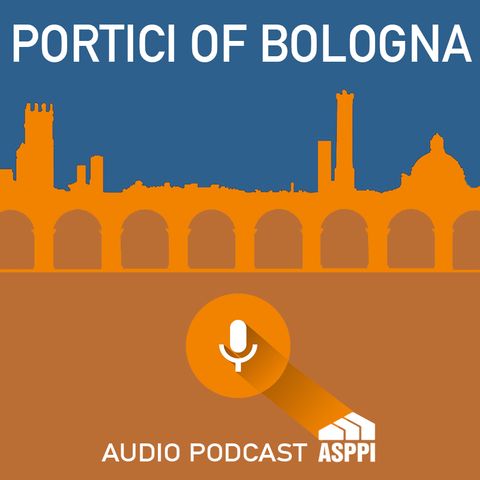Portici of Bologna. Piazza Santo Stefano (English)

Download and listen anywhere
Download your favorite episodes and enjoy them, wherever you are! Sign up or log in now to access offline listening.
Description
Piazza Santo Stefano. The stroll that takes us to one of the most original and beautiful squares of Bologna, Piazza Santo Stefano starts from the great loggia of Palazzo della...
show moreThe square gets its name from the basilica on its short South-East side. It is also known as Piazza delle Sette Chiese (Square of the Seven Churches), as the complex of the basilica encompasses seven different buildings grouped as one in the 5th century AD by Petronius, then Bishop of the city and who later became its patron saint. The basilica was built over a Roman temple of the pagan goddess Isis with the idea of recalling the Church of the Holy Sepulchre and the places of the Passion of Christ in Jerusalem.
The church is at a lower level than the square and over the centuries the joining of the two parts has been overcome in various ways with the final solution reached in 1991 by Luigi Caccia Dominioni, who planned the gentle basin shaped square leading to the church.
The square is surrounded by porticoed buildings of the Medieval and Renaissance time periods. The oldest of these porticoes still have the low wall joining the columns built originally to separate from the dirt of the road and its traffic the people walking under the archways.
Facing the Basilica, on the left is the complex of aristocratic palazzi bought and connected over time by the Isolani family. The façade of the 1400s above the elegant portico with marble Corinthian capitals, a Tuscan style still quite unusual at that time in Bologna, presents stylish Medieval windows each with a portrait in a round medallion as decoration. All the portraits have interesting 19th century hairstyles, undoubtedly added after a late restyling of the building.
From here one can reach Strada Maggiore walking through the passageway of the Corte Isolani.
Facing the Basilica on the right side of the piazza are the varied façades belonging to the Case Beccadelli-Tacconi buildings, followed by Casa Bianchi-Pasquini with a high portico with grooved sandstone columns supporting cross-vaulted ceilings, and then a series of merchant houses of the 15th century. Porticoes of different architectures and all unique: of notice is a Renaissance arcade imitating a triumphal arch with a splendid terracotta cornice, followed by a portico of the beginning of the 1400s with brick spiral column shafts, each one different to the next, and then a portico with octagonal plan column shafts and capitals of water-leaf design. The last of the Tacconi complex houses, forming a corner with the narrow Via de Pepoli shows some Romanic pieces and probably held one of the oldest Jewish synagogues of Bologna. Another curiosity? At no. 2 in this small street, in 1914 was the first historic Maserati family workshop. A plaque with the famous logo on the wall commemorates the place.
Palazzo Bolognini Amorini Salina closes the square, a grand and picturesque building. In 1525 Alfonso Lombardi and Nicolò da Volterra decorated with various terracotta heads the palazzo façade facing the square. The work was completed a century later by Giulio Cesare Conventi. These heads are all different: 26 are between the windows on the two upper floors of the façade whilst 13 are between the arches of the portico and seem to be people-watching: look out for Turkish man with his turban and the laughing devil, of incredible detail.
All these different buildings and porticoes with overlapping time periods and styles blend in perfect harmony. In fact, it is this irregularity of the parts with their remarkable differences that composes the architectural and urban masterpiece which is piazza Santo Stefano.
By Antonella Merletto Architectural historian and Official Tour Guide.
Antonella has a degree in Architecture, a post-degree specialization in Ancient Greek and Roman Architecture and a PhD in Ancient Architecture. Antonella is British-Italian and is bilingual. She teaches History of Art, History of Architecture and Archaeology in various American Universities in Rome and is an Official Tour Guide.
Information
| Author | ASPPI |
| Organization | ASPPI |
| Website | - |
| Tags |
Copyright 2024 - Spreaker Inc. an iHeartMedia Company

Comments